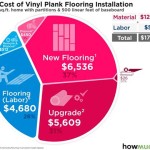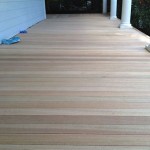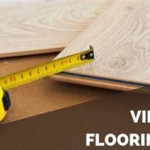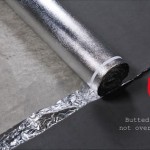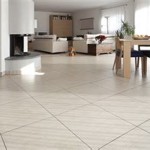Installing Laminate Flooring Transitions On Concrete Walls In Revit
Revit offers powerful tools for accurately modeling intricate building details, including the often-overlooked transitions between flooring and walls. This article focuses on modeling the installation of laminate flooring transitions against concrete walls within a Revit project. Properly representing these transitions is crucial for generating accurate material takeoffs, creating realistic visualizations, and facilitating clash detection during the design phase. This process leverages Revit families, wall assemblies, and floor types to create a detailed and accurate model.
Creating the Transition Profile
The first step involves creating a Revit family representing the desired transition profile. This profile dictates the shape and size of the transition strip. Begin by starting a new family using the "Metric Generic Model" template. Sketch the transition profile using reference planes and lines, ensuring accurate dimensions. This profile can be as simple as a rectangular extrusion or a more complex shape incorporating curves and angles depending on the specific transition being used. The created profile should then be extruded to give the transition a three-dimensional form. Assign appropriate materials to the transition family for accurate visualization and material takeoffs. Finally, save the family with a descriptive name, such as "Laminate to Concrete Transition".
Integrating the Transition with Wall Assemblies
After creating the transition family, it needs to be integrated into the wall assembly. Open the wall type properties for the concrete wall where the transition will be installed. Within the "Structure" section, use the "Edit..." button to modify the wall's layers. A new layer needs to be added to accommodate the transition profile. Specify the newly created "Laminate to Concrete Transition" family as the material for this layer. The thickness of this layer should correspond to the height of the transition profile. Position this layer appropriately within the wall assembly, typically aligned with the finished floor level. Adjust the layer function to "Finish-Interior" to categorize it correctly within the model. This integration ensures the transition is automatically placed along the base of the concrete wall.
Modeling the Laminate Flooring
The next step is to model the laminate flooring itself. Create a new floor type specifically for the laminate material. Within the floor type properties, define the structure and material layers of the laminate flooring, ensuring accurate thickness and material assignments. The floor's "Structure" section plays a crucial role in defining how it interacts with the wall. Pay attention to the "Offset from Level" parameter. This parameter controls the vertical position of the flooring relative to the level it's placed on. This value should account for the combined thickness of the subfloor, underlayment, and the laminate planks themselves. Correctly setting this offset ensures that the flooring and the wall transition align seamlessly.
Placement and Verification
Once the floor type is defined, place it within the model, ensuring it extends to the base of the concrete walls. The transition profiles, already integrated into the wall assembly, will automatically appear where the floor meets the wall. Use Revit's 3D view modes to visually inspect the connection. Tools such as "Thin Lines" and "Shading with Edges" can help clarify the intersection between the floor, wall, and transition. The "Section Box" tool allows for detailed inspection of the wall assembly, verifying the correct placement and alignment of the transition within the wall structure. This verification process is critical for ensuring the model's accuracy and preventing potential clashes during construction.
Managing Complex Corners and Intersections
In real-world scenarios, flooring transitions often encounter complex corners and intersections. Revit offers tools to manage these situations effectively. Utilizing the "Join Geometry" tool allows for the clean intersection of different wall types. This is particularly important where different wall finishes meet, maintaining a continuous transition profile. For non-orthogonal wall intersections, consider creating specific transition families designed for angled connections. This approach allows for a more accurate representation of the transition detail in complex architectural configurations.
Utilizing Schedules for Quantification
A significant advantage of modelling these transitions directly in Revit is the ability to leverage schedules. Creating a schedule specifically for the “Laminate to Concrete Transition” family allows for accurate quantification of the required transition material. This information is invaluable for cost estimation and material procurement. The schedule can be customized to include parameters such as length, material, and type, providing a comprehensive overview of the transitions within the project.

A Complete Guide On How To Install Laminate Flooring Concrete

Lvp Flooring Installation Over Concrete Subfloor Full Instructional Builds By Maz Flooret

How To Install Laminate Flooring On The Wall

Installing Laminate Flooring Finishing Trim And Choosing Transition Strips

How To Easily Install A Laminate Floor Over Concrete Sunny Side Design

Installing Laminate Flooring Finishing Trim And Choosing Transition Strips

Laminate Flooring Wall Installation

How To Install Vinyl Plank Flooring On Walls Europine

How To Stagger Laminate Flooring Properly

A Simple Guide To Installing Laminate Flooring Citygirl Meets Farmboy
Related Posts

